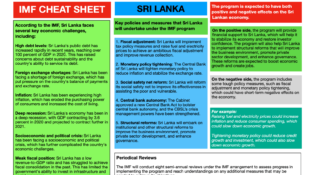Life Insurance penetration up in 2010 http://www.sundayobserver.lk/2011/05/15/fin13.asp
During 2010, 503,543 life insurance policies were issued, giving a penetration rate of 10.9 percent.
This shows an improvement when compared with the rate of penetration in 2009, which was 10.4 percent 464,249 life insurance policies issued during 2009.
There were 19 insurance companies (insurers) registered with the IBSL at the end of 2010. Twelve of them were composite companies (dealing in both General and Long Term Insurance); five of them engaged in General Insurance and two companies engaged only in Long Term (Life) Insurance.
The overall Gross Written Premium (GWP) Income for Long Term Insurance and General Insurance was Rs. 68,493.345 million compared with the previous year's Rs. 57,252 million, which reflects a growth of 19.63 percent.
General Insurance has demonstrated a progress of its overall Gross Written Premium Income during 2010 when compared to 2009. Long Term Insurance also showed a progress of its overall Gross Written Premium Income during the first half of 2010 when compared to 2009.
The overall Gross Written Premium Income of General Insurance amounted to Rs. 37,342.19 million (2009 - Rs. 33,485 million) while the overall Gross Written Premium Income of Long Term Insurance amounted to Rs. 31,151.155 million (2009 - Rs. 23,767 million).
Total Assets of the insurance companies have increased to Rs. 222,242.799 million at the end of 2010. Total Assets valued at the end of 2009 was Rs. 181,044.917 million.
In terms of Section 25 of the Act, 20 percent of assets of the Technical Reserves of General Insurance should be invested in Government Securities.
Similarly, 30 percent of the assets of Long Term Insurance Fund should be invested in Government Securities.
This is a mandatory requirement that all insurance companies have to comply with, which is monitored by the Insurance Board of Sri Lanka (IBSL).
IBSL was set up to develop, supervise and regulate the insurance industry in Sri Lanka in terms of the Regulation of Insurance Industry Act, No. 43 of 2000.
The investment in Government Securities represents 50.19 percent (Rs. 70,059.073 million) of the total assets of Long Term Insurance and 23.70 percent (Rs. 19,584.153 million) of the total assets of General Insurance at the end of 2010. This is in excess of the requisite amount of investment in Government Securities by the Act.
Insurance Broking Companies and Insurance Agents, as intermediaries, make a significant contribution to the insurance industry.
In Sri Lanka, there are approximately 37,000 Insurance Agents, who have been appointed by and registered with insurance companies and insurance broking companies. Insurance Agents play a vital role mainly in marketing life insurance products.
Forty-one insurance broking companies, registered with the IBSL in terms of Section 82 of the Act, were engaged in insurance broking business.
Insurance Broking Companies mainly concentrated on General Insurance and their Total Gross Written Premium generated from both General Insurance and Long Term Insurance amounted to Rs. 9,539.66 million during 2010, compared with 2009's Rs. 8,885.67 million, which reflected a growth of 7.36 percent.
Gross Written Premium (GWP) Long Term Insurance and General Insurance Business (Rs. million)
Year 2006 2007 2008 2009 2010 Total Assets (Rs.'000) 117,658,799; 134,876,221; 155,993,677; 181,044,917; 222,242,799 Total Assets of the Insurance Companies at the end of each year.
Year 2006, 2007, 2008, 2009, 2010 No. of new Life Policies issued during the year 409,933; 527,385; 555,886; 464,249; 503,543 Life Insurance Penetration 8.8; 9.6; 10.4; 10.4; 10.9 as a percentage of the total population.
Year 2006, 2007, 2008, 2009, 2010 Total Gross Written Premium generated from both General and Long Term Insurance Businesses (Rs.'000) 6,171,604; 7,551,357; 8,975,654; 8,885,672; 9,539,661.
 Insurance Sector Analysis.xlsx
Insurance Sector Analysis.xlsx  would enable you to enjoy an array of other services such as Member Rankings, User Groups, Own Posts & Profile, Exclusive Research, Live Chat Box etc..
would enable you to enjoy an array of other services such as Member Rankings, User Groups, Own Posts & Profile, Exclusive Research, Live Chat Box etc.. 
 Home
Home






















